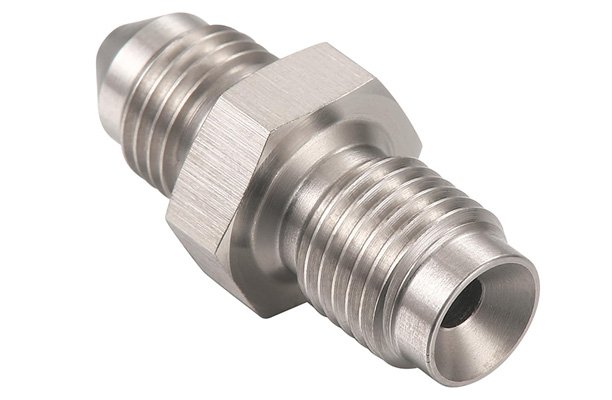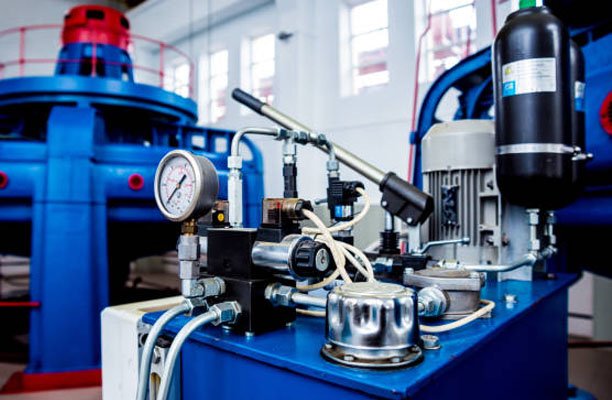The braking system is a crucial component of any vehicle, ensuring safety and control. While brake pads and rotors often get the spotlight, brake line fittings are fundamental to maintaining brake performance. Understanding different types of brake line fittings can enhance your vehicle’s braking efficiency and safety.
What Are Brake Line Fittings?
Brake line fittings, for instance, create a secure connection between brake lines and other components, thereby ensuring efficient brake fluid flow. These fittings are, therefore, vital for maintaining a leak-proof system as they transmit hydraulic pressure from the brake master cylinder to the calipers or wheel cylinders. Without proper fittings, on the other hand, brake fluid could leak, pressure could drop, and consequently, your brakes could fail.
Common Types of Brake Line Fittings
Double Flare Fittings

Double flare fittings are common in domestic vehicles, featuring a double-walled flare folded back on itself. This design enhances durability and pressure resistance.
Advantages:
- High resistance to cracking and splitting.
- Superior sealing to reduce brake fluid leakage.
- Ideal for high-pressure brake systems in everyday vehicles.
Usage: Typically installed using specialized tools for a perfect fit.
Bubble Flare Fittings

Bubble flare fittings, or ISO bubble flares, are used in European and some Asian vehicles. These fittings have a single-layered flare creating a rounded bubble shape.
Benefits:
- Easier to manufacture and install compared to double flares.
- Suitable for moderate pressure systems in imported vehicles.
- Meets ISO standards for automotive applications.
Usage: Ensure compatibility when replacing or repairing brake lines in European vehicles.
Inverted Flare Fittings

Inverted flare fittings are mainly used in American vehicles, featuring a 45-degree inverted flare that fits into a corresponding seat on the component.
Advantages:
- Excellent resistance to pressure and vibration.
- Provides a secure, leak-free connection.
- Easy installation with standard flare tools.
Usage: Commonly included in many brake line kits.
AN (Army-Navy) Fittings
AN fittings are designed for high-pressure and durable applications, often found in performance and racing vehicles. Originally developed for military use, they are now popular in automotive racing.
Features:
- Made from high-quality materials like stainless steel or aluminum.
- Designed to handle extreme pressure and heat.
- Precision-engineered for a reliable connection.
Usage: Measured in dash sizes corresponding to the brake line diameter (e.g., -3 AN for 3/16” lines).
Compression Fittings
Compression fittings offer a quick and easy connection method, often used for temporary repairs or low-pressure systems. They work by compressing a metal ring (ferrule) around the brake line.
Limitations:
- Not recommended for high-pressure systems due to leak risks.
- Often used as a temporary fix.
- Can loosen over time with vibration.
Usage: Best avoided for long-term use in favor of more secure fittings.
Push-to-Connect Fittings
Push-to-connect fittings are used in air brake systems for heavy-duty trucks and trailers. They allow easy connection without tools, with an internal collet holding the brake line securely.
Advantages:
- Quick installation with no special tools.
- Ideal for pneumatic brake systems.
- Reusable and easy to disconnect and reconnect.
Usage: Primarily used in air brake applications rather than standard hydraulic systems.
Materials Used in Brake Line Fittings
Stainless Steel
Stainless steel fittings are highly resistant to corrosion and handle high-pressure applications. Ideal for vehicles in harsh environments.
Brass
Brass fittings are machinable and corrosion-resistant, suitable for moderate pressure systems. Often used with copper-nickel or steel brake lines.
Aluminum
Aluminum fittings are lightweight and corrosion-resistant, typically used in high-performance applications like racing due to their lower strength compared to stainless steel.
Steel (Zinc-Coated)
Zinc-coated steel fittings are strong but prone to corrosion. Zinc coating enhances resistance, making them suitable for heavy-duty applications.
How to Choose the Right Brake Line Fitting Type

Choosing the correct brake line fitting depends on various factors, including the vehicle type, brake system requirements, and even driving conditions. Below are some key considerations when selecting brake line fittings:
Vehicle Make and Model
The type of fitting you need will largely depend on the make and model of your vehicle. For instance, European cars often require bubble flare fittings, while most American vehicles use double or inverted flares. Always check the manufacturer’s specifications before making a purchase.
Brake System Pressure
The pressure within the brake system also determines the fitting type. High-performance vehicles or those subjected to extreme braking conditions, like racing cars, often require AN fittings, which can withstand higher pressures. On the other hand, everyday vehicles typically perform well with double or inverted flare fittings.
Corrosion Resistance
If you live in an area that uses road salt during winter or regularly exposes vehicles to moisture, choose corrosion-resistant materials like stainless steel or brass. This will help extend the life of your brake lines and fittings.
Compatibility and Standards for Brake Line Fittings
Ensuring that brake line fittings are compatible with your vehicle and meet required standards is essential to prevent leaks, brake failure, and other safety risks.
- Follow Vehicle Specifications: Always check your vehicle manufacturer’s specifications for brake line fittings to ensure they meet OEM standards, guaranteeing a proper fit and reliable performance.
- Adhere to Industry Standards: Fittings should comply with industry standards like SAE and DOT regulations. For instance, SAE J1401 ensures fittings used in hydraulic brake systems are safe and durable for automotive use.
- Material Compatibility: Make sure fittings match the material of the brake line. For example, stainless steel fittings work well with braided lines, while brass fittings are better for rubber lines, preventing corrosion and ensuring a secure fit.
- Size and Thread Type: Matching the fitting size and thread type to your brake line is critical. Using the wrong size or thread type can lead to leaks and poor braking performance.
Common Problems with Brake Line Fittings
Although brake line fittings are designed to provide a reliable, leak-proof connection, they may still develop issues if you don’t maintain or install them properly. Some of the most common problems include:
Corrosion and Rust
Corrosion is one of the most frequent issues affecting brake line fittings, especially in older vehicles or those exposed to harsh environments. When brake line fittings corrode, they weaken and may cause leaks or even brake failure.
Improper Installation
Incorrectly installed fittings can lead to leaks, reduced brake performance, or even complete brake failure. It’s important to follow proper installation procedures and use the right tools, such as flare nut wrenches and flaring kits, to ensure a secure and leak-free connection.
Wear and Tear
Brake line fittings are subject to wear and tear over time, especially in vehicles used for off-roading or heavy-duty applications. Regular inspections and maintenance are essential to ensure that your brake fittings remain in good condition.
Solutions and Repairs for Brake Line Fittings
Brake line fitting issues, such as leaks, corrosion, or wear, can compromise your vehicle’s braking system. Fortunately, many problems can be easily addressed with timely repairs or replacements. Here are some simple solutions:
- Tighten or Replace Fittings: If you notice brake fluid leaking around the fittings, first check if you’ve tightened them properly. If they still leak, the fitting might be damaged and will need to be replaced.
- Repairing Corroded Fittings: Corroded fittings can weaken over time, especially in areas with harsh climates. Replacing them with corrosion-resistant materials like stainless steel ensures long-term reliability.
- Flaring Tools for Damaged Brake Lines: For damaged flares, using a flaring tool to reflare the brake line can restore the connection. Ensure the fitting type (double, bubble, or inverted) matches your vehicle’s requirements.
For significant damage, it’s often safer to replace the entire brake line and fitting assembly, ensuring the integrity of the braking system. Always follow the manufacturer’s specifications to avoid future issues.
Conclusion
Brake line fittings, though small, play a crucial role in your vehicle’s braking system. By understanding the types, materials, and maintenance of brake line fittings, you can ensure better performance and safety. Regular maintenance and proper selection of fittings are key to a reliable braking system.
FAQs
What are the common types of brake line fittings?
Common types include double flare, bubble flare, and AN fittings, each suited to different vehicle systems.
Can I use compression fittings for brake lines?
Compression fittings are not ideal for high-pressure systems and are best used for temporary repairs.
How do I know if my brake line fittings need replacement?
Signs include brake fluid leaks, spongy brakes, or visible corrosion.
What material should I use for brake line fittings?
Stainless steel is best for corrosion resistance, while brass is suitable for lower-pressure systems.
Are brake line fittings universal?
No, they vary by vehicle make, model, and system requirements. Always check your vehicle’s manual.
How do I ensure proper fitting compatibility?
Match the fitting type, size, and material to your brake system specifications and follow industry standards like SAE and DOT.





